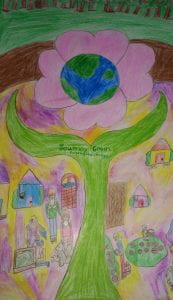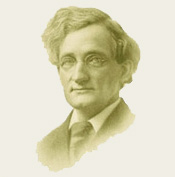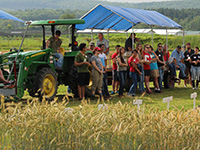Home | Unit 1 | Unit 2 | Unit 3 | Unit 4
Learning Activities
- My Carbon Footprint
- Exploring Ways to Grow Sustainability for the Future
- Exploring Plans for Climate Resiliency
- NYS 4-H Virtual Meeting Guidance
Unit Two Facilitator Guide: a downloadable pdf of Unit Two, complete with activities, handouts and tools for facilitators.
Introduction
In Unit One: What’s My Story, your group participated in activities that explored self-awareness, self-control, existing knowledge, and how they see themselves as part of a larger and more complex system. In looking at the big picture, stress and concerns that our younger generation may have regarding the fate of their future has placed a burden on their shoulders for which they may not be ready. As adult leaders, it is our responsibility to provide guidance, awareness, and evidence needed to for youth to effectively process this information and make more informed decisions and choices for positive change.
Unit Two: What Do I Know? provides an exploration of proactive sustainable practices that offer solutions to climate change issues. Before starting this unit, take a look at the curricula and resources listed here, should your group need a more in-depth inquiry and basic knowledge of climate, weather, and the science and effects of climate change and global warming. You can also use these resources to compliment the activities in Unit Two. Ongoing, open and honest discussion will help address the fears or misconceptions youth may have in regard to climate change and how as a society we are addressing these issues.
How to Talk About Climate Change with Youth
Since climate change perspectives may differ, it is advisable for educators and youth leaders to be ready to respond to those feeling climate anxiety or those in need of science-based knowledge. To provide the public with awareness of climate change risks, we need to frame conversations around climate change impacts and the capacity of our communities to adapt and be engaged. We need not have all the answers to play a critical role in addressing climate change, since this is an ever-changing, complex topic that still has unknown factors.
Facilitate conversations and dialogue that allow youth to fully engage and express personal viewpoints, and to process any emotional response such as worry, fear, interest, and curiosity which may emerge in their understanding about climate change vision of the future. We can promote a positive tone while using of scientific evidence, when participating in discussions around the critical nature of the issue and offer strategies for curbing and adapting to climate impacts.
Target Objectives
- Recognize the relationships between personal actions, evidence of global warming, climate change facts and sustainable methods.
- Explore different actions and methods that foster sustainability in the natural world.
- Understand the philosophy of Permaculture Design and how it promotes a caring and sustainable environment.
- Experiment with different ways to grow food in a both a controlled and natural environment.
- Observe patterns of pollinating insects and construct a dwelling and/or natural habitat to attract pollinators.
- Recognize gardening practices that promote sustainability.
- Evaluate a garden site and create a design that supports sustainability.
- Investigate solutions and identify how communities develop a plan for Climate Resiliency.
Thriving Model Attributes
- Youth Engagement: growth mindset, openness to discovery, goal management
- Developmental Outcomes: contribution to others, connection to others, personal responsibility
- Long-Term Outcomes: happiness and wellbeing
Introduce the Topic
For youth interested in or need a basic introduction to climate change and its effects on living things, the curricula and activities listed below are recommended as a way of introducing students to the concept of climate.
Terrarium Making
- Terrarium making is appropriate for beginning levels, providing an opportunity to begin working with plants in a tactile way and to begin to understand climate variables like moisture and temperature while creating their own miniature worlds.
- A demonstration using two identical terraria, one open and one covered, can be used to demonstrate the greenhouse effect.
- Explain to students the similarity between a closed jar (glass dome) and greenhouse gases (gas dome).
- Discuss how the burning of fossil fuels creates the gas dome that traps heat. The use of miniature electronic temperature and humidity sensors can demonstrate the difference in climate between a closed terrarium, where infrared radiation is trapped, and an open terrarium where infrared radiation escapes.
Terrarium Variations
Create individual terraria in quart-sized Mason jars or other small glass containers to represent different climates. Emphasize creativity and allow students to dream up their own miniature worlds. Play with the variations (closed/open, dry/wet, warm/cool). Grow lights can be used to create more light/heat.
Define climate
Open a discussion on climate change and its effect on our daily lives: What defines the climate where you live? How does it compare with other climates? How does your climate affect what you wear? What you eat? How you play? When you go outside?
Make climate flashcards
- Using a web-based image search, find images that show examples of landscapes and their locations for each of the five major color-coded climates represented on the Koppen-Geiger climate map from National Geographic online resources (tropical, dry, temperate, continental, and polar).
- Write the climate name on the other side of the card. Guess the climates simply by looking at the photos.
- For advanced levels this exercise can be made more challenging by expanding the exercise to include the climate sub-categories.
Explore climate fiction (cli-fi) and other climate change literature
- In the reference section below find links to lists of youth-appropriate climate-fiction and eco-fiction stories. Create a reading list appropriate for your students’ age and reading level.
- Discuss the stories. What feelings do they evoke? What do they say about our future and our choices?
- Create your own story. After reading climate literature, have students imagine their own short stories or story boards exploring the challenges facing our planet’s future, with a hopeful and positive outcome.
Curricula and Resources to Introduce Climate Change
- 4-H Science Toolkit Series: Climate
- Biosphere 2 Center for research, outreach, teaching and life-long learning about Earth, its living systems, and its place in the universe.
- Climate Literacy & Energy Awareness Network (CLEAN)
- Climate Project, Cooperative Extension: 4-H – University of Maine Cooperative Extension
- Exploring Your Environment Curriculum, National 4-H Curriculum
- Get Real on Climate, Climate Change Lesson Plans for Grades 9-12, UNICEF Canada
- NASA Climate Kids: Terrarium
- National Geographic Online Resources: Köppen Climate Classification System
- NYS 4-H STEM Projects: Energy and Climate Smart Solutions
- NOAA Climate Change Education Resources
- Our Climate Our Future, Alliance for Climate Education
- Project Idea Starter: Climate Change, Ohio State University 4-H
- Setting up a Classroom Grow Station: Cornell Cooperative Extension
- Teaching Climate Literacy, Climate.gov
- Teacher’s Guide: Introduction to Climate Change, Local Lessons For A Cool Climate, University of British Columbia
- Terrarium making basics, Instructables
- Weather and Climate Variability Toolkit, AgroClimate
Climate Literature
- Climate fiction (Cli-fi) for teens from The Hub
- Children’s books about climate change from Yale Climate Connections
- Koppen-Geiger Climate Map: Wikimedia Commons: World Köppen Map.png: Peel, M. C., Finlayson, B. L., and McMahon, T. A. (University of Melbourne)
- Reading list from ecofiction.com (dragonfly.eco)
Authors: Donna Alese Cooke, Veronica Kaliski, Dina El-Mogazi, Reviewers: Marcia Eames-Sheavly, Joy Flynn, Veronica Kaliski, and Lisa Baastians, CCE Suffolk Master Gardener Volunteers










